Sound is an often-overlooked part of the cinematic experience, but one of the most important. The soundscape of any movie can increase the audience’s immersion and generate a visceral reaction to the events happening on the big screen, and rarely has that been truer in modern Hollywood than with the John Wick franchise.
Whether it’s the shootouts, car chases, fistfights, or even background noises that layer atmosphere on top of intensity, the action saga is a cacophony of sonic carnage that’s just important to the overall impact of the films as the bullets, bodies, and bloodshed.
With Chapter 4 now playing in theaters and heading for a massive weekend at the box office, viewers all over the world will be experiencing the sound of the latest John Wick en masse. With that in mind, We Got This Covered had the chance to speak to Mark Stoeckinger, Andy Koyama – both of whom have been with the series since the beginning – and Casey Genton about creating the soundscape of the acclaimed shoot ’em up, which you can check out below.
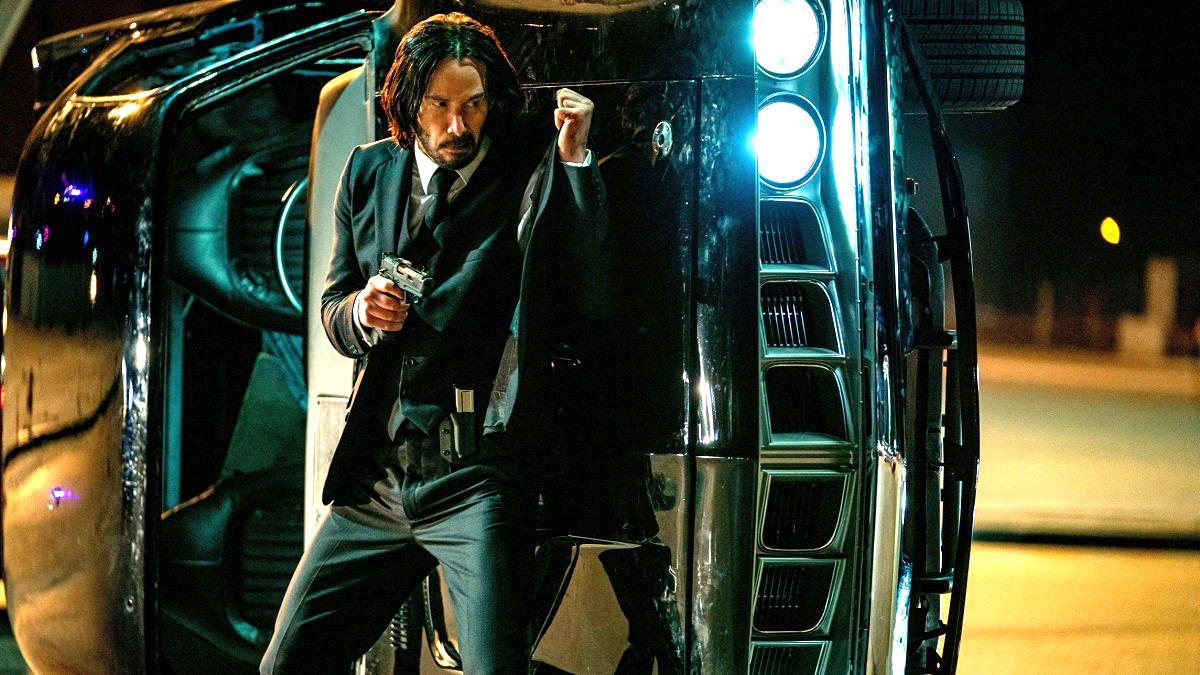
Sound is one of the most important aspects of cinema, but it’s also one that often goes unnoticed, because it’s something that audiences won’t even think about, even though it plays a huge role in immersing them in the action that’s unfolding onscreen. Can you briefly explain or run down your roles on John Wick: Chapter 4, just to underline how pivotal it is to the overall experience?
Casey Genton: I mixed the effects on this film. So the guns, punches, gore, brutality, and more. And I think that a lot of people, gravitate to the Wick franchise because of all these things. And Mark and his crew put together an amazing sound, editorial, and sound design job. And then it goes to my hands to then fit into the world of Wick, so it gets balanced out against Andy’s dialogue and music. And we we use… I’m the effects part of the overall soundtrack.
Andy Koyama: I mix the dialogue and the music. The sound is such an important factor, although it it’s usually only people notice it when it’s something wrong! But it’s quite powerful, like when we feature a certain sound at a certain time in the film, and we can direct the audience’s eyes to the parts of the frame where they might ordinarily not go. And through use of music, and sound design, and atmospheres, we can influence what the audience feels, in terms of mood and emotion. It’s very powerful. And not well appreciated, people usually only notice when it’s poor!
Mark Stoeckinger: Yeah, exactly! That is so true. That is so true. My job is the supervising sound editor. So I guess, simply, it’s the content provider for everything but music to the mix. And along the way, working with the filmmakers, the director, and picture editors to accomplish what they want to, and how their film’s gonna eventually sound.
So it’s making things, working with other people that are making things, making sure the dialogue is correct, and things that need to be looped, and what needs to be recorded is good and workable for the film, and it’s got a flair and a style to it, and bring all that to Andy and Casey, where they make a beautiful soundtrack out of it.
Mark and Andy, you’ve been with the franchise since the very beginning, but Casey this is your first John Wick movie, so how did it feel to be he new kid on the block?
CG: You know, it was pretty great. I work with Mark quite a bit, this is my first time working with Andy, but it didn’t have a new kid on the block field at all. Because, number one, I definitely take their input in terms of what this world is, and how best to work within it.
But with that, they were very welcoming to any new ideas or approaches that I wanted to do, or just to try at least, and it didn’t have that new kid on the block field. So for that, I don’t even know if I told you guys, but thanks a lot. You guys are awesome!
AK: Great collaborative team, and everyone brings their own creative ideas and innovations to the table, and and we’re really willing to try anything, and all that influence just makes the whole product better.
CG: Andy and Mark are really the keepers of this world. And they really do such a great job at keeping everything in line. And they’re great. It was great experience.
MS: I would say that the best champion of the entire cause is Chad Stahelski, the director. He really does appreciate what we all do, and he expects it to be great. And he helps get us the resources we need, the direction we need, the enthusiasm and the motivation at times that we need, to get it to its end result.
You know, everybody said the same thing a lot. that it is a team effort. It takes a village. And that’s all completely true. And there’s many sub-villages in this journey to come up with a nice-sounding John Wick soundtrack.
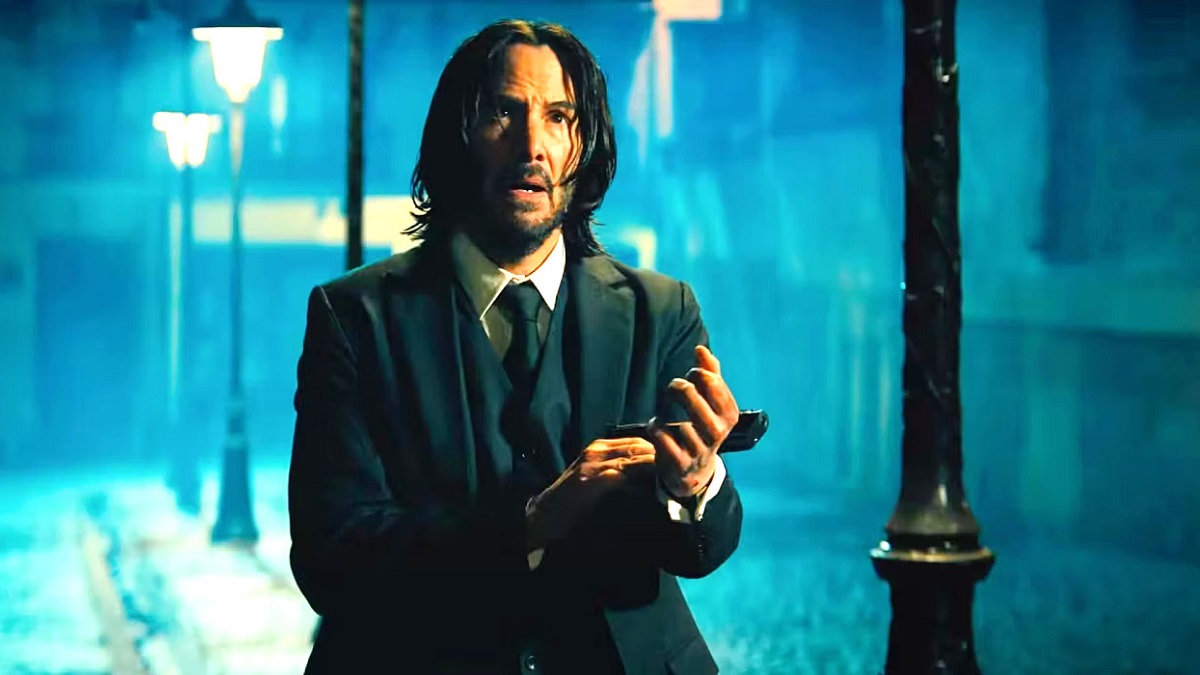
A lot of crew members have been with the franchise since the very beginning, so is there an established synergy now between the various departments when so many of them are on their fourth John Wick?
MS: I can answer some of that. I mean, this is a new film for the picture team on this. There’s been a total of three picture teams over the course of four John Wick movies. So you’re always learning their style, because they are leading the process, and how they like to work. And there’s no difference in that.
But because it’s an established and an evolving franchise there’s certain expectations, so I think everybody – regardless of what your job is, what department you’re in – everything, people realize that game, and work towards that. So yes, there’s a working shorthand, especially with those of us that have been around since week one.
But it’s also sort of clear, I think, as far as the Wick franchise is open for anybody that joins in, like Casey did. You’ve either seen the films or you liked the franchise, or you like to do that kind of sound work, and whatever. And it just ends up in a very collaborative process.
As an experienced stunt performer and coordinator, Chad will presumably be very meticulous about how he wants the action sequences to sound and feel, has that been a different experience compared to some of the other action-heavy productions you’ve worked on to have a director that’s so familiar with that side of things?
MS: I can start off with that one. It is great to have somebody like that, Chad, he’s really not a micromanager. There’s certain things that are important to him, and a big picture.
And he’s really clear about that, because he wants all those people that are working with him to help discover and present ideas that he can be the clearing house for; there’s certain specific sounds that could be the bullet hits on the suits, or something that he’ll drill down to a specific sound.
But beyond that, he allows a fair amount of free range. And he gives the big picture notes. I mean, obviously a film that’s this grand, his first note ever was something that’s more in Andy’s world, he wanted each space to be big and different and unique, and he wanted to hear and feel the space, based on what that real space could wound like the whole film.
A lot of the film’s shot in practical locations. So he’s experienced all that. And if you’ve seen the film, you can see some of the epic visual spaces. And so, he just wanted to follow suit with some epic sonic spaces. If that makes sense.
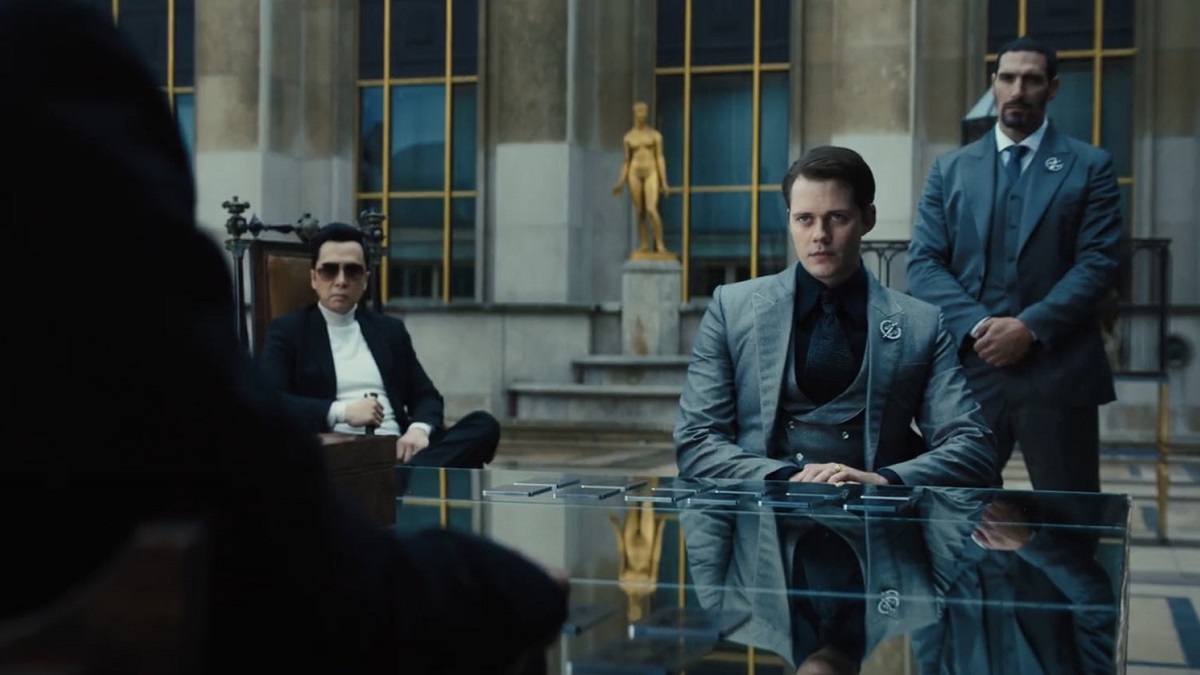
The franchise has been getting bigger and bigger, with Chapter 4 being four or five times bigger than the first film. Has that increased sandbox in terms of scope and scale been a blessing or a curse for you guys, or can it be a combination of both depending on what scene you’re working on?
MS: Who wants to unpack that one?!? That’s a good one.
CG: That’s a good observation, too. Yeah, it’s something I think we talked a lot about, when we’re in the early stages of the mix, this one sort of leaves the stratosphere of other Wick films for sure.
MS: There’s always big set piece scenes in a lot of the Wick films, and this one has lots of them. So, some of which could be similar to what we’ve seen before, but they’re never identical. And there’s always something new and unique.
You know, in Chapter 3, it was a samurai fight on motorcycles on a bridge. And this one is one-way traffic in the Arc de Triomphe, plus an incredible top shot through a whole shootout in a manor house. So there’s always something different and unique.
And yeah, it’s part of the John Wick world as far as it’s got to be fun and detailed and visceral, and not a wall of sound. So that’s maybe that’s the common ground through all of them.
CG: But to answer the question, what do you think Mark? This definitely has… the threshold was raised, I think, for the creative sound ideas.
MS: Oh, sure.
CG: Like you were saying, the Arc de Triomphe and stuff. That’s a really crazy, dense scene. And creatively, I think it’s a lot. We had to pull some new, I think, ideas and tricks out of our hat to be able to pull that one off in a cool way. And Andy did such an amazing job with the music, and getting everything put together. It definitely needed some new new tools for that.
MS: Yeah, we’ve all seen fight scenes in clubs before, but this one took it to a new level, we’ve even had fights in clubs in other John Wicks.
AK: Visually, all the sets were more lush, and exotic and, and I think that inspired us to be a little more detailed with backgrounds and the type of spaces that all the effects and vocals lived in. And it just informed the mix, it was just visually more sumptuous than the previous Wicks.
The theatrical cut is 169 minutes including credits, but I spoke ot Nathan Orloff and he said the first cut was three hours and 45. With a film of that size, what’s your process like in terms of how much footage you deal with at any given time, and how you work throughout production and then into post?
MS: Well, there’s the way that it’s usually done. And then there was the way that it was done on this film. I mean, the way it’s usually done, you start towards the end of the director’s cut, and you start developing a soundtrack. And you carry that through previews and what have you, all the way until you’ve finished your soundtrack, your final mix.
This film was a little different, in that they did all the sound editorial in the picture department in the Avid with sounds that we provided them, either made for them or provided them. So, it was different in the fact that we came on towards the end of the film, as far as a team of people working on it.
Although we’ve been participating all along and giving them sounds, but we didn’t evolve the way it played, we didn’t evolve the mix, the picture department did that on their own, they previewed out of the Avid in 5.1. And they’re very, very adept at doing that, and did an amazing job. So, in a way, this film is unique in that approach.
And so when we talk about sound, we talked to those that have something that says sound in their credit in the movie, but the picture department on this film, and really on every film – picture editor and their assistants – they do so much work in developing how a film is going to sound and play.
They need to know as part of the cuts part of them telling the story. And this was really exceptional in the way that they presented that. And they had a lot to do with telling the story. I mean, realistically, you could take the picture editor and some of the assistants and call them sound editors, sound designers, what have you, because they did that job as well. If that answers your question!
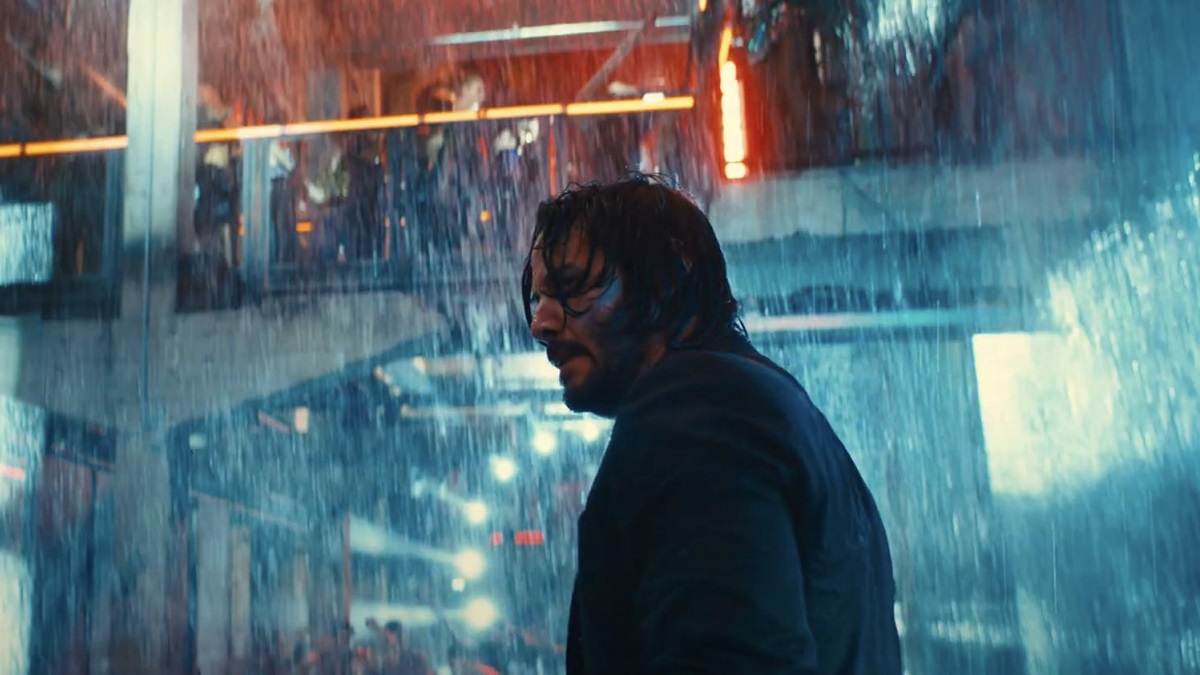
There’s a lot of gunfire in a John Wick movie, which is probably an understatement, but are you forced to be as close to realistically accurate as possible when it comes to which weapon makes which sound, or are you encouraged to use some creative license to get the best version possible to suit the tone of the scene?
MS: Actually, none whatsoever, as far as being accurate to it. I don’t think there’s a single weapon in this movie that probably sounds like the real one. And as you might know, real guns don’t sound like movie guns. They’re like a hybrid, depending on the genre of the film. But no, it’s really whatever dramatically is going to make the most sense.
CG: To add to that, I think the the thing that we’re after when adding those sounds for each of these different elements, and the reason why we use elements that aren’t so accurate to the gun, is that what Mark and his team do is they create this aggression and a feeling with the guns that if you were to use a real gun, if you were recorded a real gun, you wouldn’t get the same emotional response, I think than the way that they would the emotional response they get from the guns that they create is actually more in line with the way that it feels to shoot a gun. If that makes any sense. Yeah, they it makes a lot of sense.
AK: Yeah, it makes a lot of sense.
CG: There’s an aggression to the way that the guns sound in Wick that make you feel like there’s just a little bit of a startling element to it, which I think translates really well to audiences. Which is subliminal, but I think it does make a difference.
MS: We had a couple interviews. And John Wick is known as action film. And it’s got a lot of gunplay and fights. But there’s a lot of sound beneath that, that creates the world of Wick. That might not be overly obvious, but it gets the same sort of attention, as the guns would.
It could be simple, like the sound of the hourglass that’s counting down the time until the Continental gets blown up, to various tonalities that sit in a scene to add tension, like a clock tick that will add tension, or the sound of something that’s happening offstage that adds to the scene in various ways. So there’s a pretty rich tapestry of that going on. In every movie, really, but in this one in particular. So that’s definitely something to pay attention to.
One of the most important elements of John Wick is one that audiences may not necessarily pick up on at first – and that’s the added weight and crunch of the fight scenes. With so many different fights taking place across the running time, how do you go about creating a different soundscape for each on to ensure that it retains the signature style compared to a gun battle?
MS: Casey, do you want to take this one? The same concept applies, as far as blending frequencies.
CG: Yeah, yeah, no, totally, I think as far as the fights go, it depends on the scene. You know, I think that the club fight, it’s interesting, because what you just said about the fights not having layers that are more “designy,” because they have to live in a real world. If you were to mute the music, right?
Like, the music is so big in that club sequence, that the elements in the fight are pretty crazy. If you were to mute the music, it sounds like an absolute, like bloodbath. In order to get through that, it’s got to be 10 times, or even 100 times what a fight would actually sound like, which means using elements that on their own, you’d be like, “Well, that doesn’t work.”
But then when you kind of layer them into the actual mix of the movie, its pokes through in a way that sort of brings it to the forefront, and feels as brutal as it can be through through the music.
AK: I wanted to add; the way Chad shoots, there’s a lot of wide angles and long shots. So these guys are actually performing these fight moves. And that informs the way we mix it. And also, a lot of the time, the production sound from the fight is included – the grunts and efforts and movements of the characters. And that sort of adds a reality to these scenes as well. It’s not just all canned sound, there’s actually real sound in there as well.
CG: Yeah, that’s a good point.
MS: Yeah, we work hard to include that, even if it’s not the best recording, because it’s hard to have the best recording when you’re doing that. But it’s just so important to the glue of a scene that you go in there.
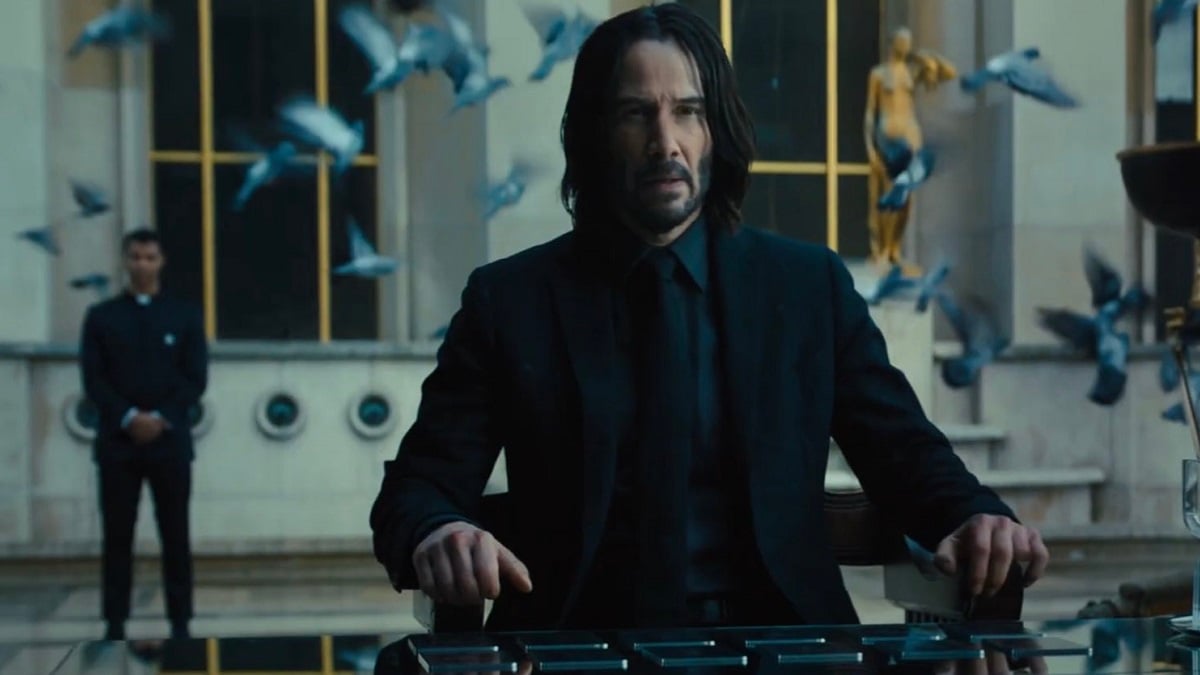
With so many moving parts on every level, is there a balance you try to strike – or would like to strike – when it comes to on-set audio compared to ADR? Just in terms of your personal preferences and approach to the film as a whole.
AK: In every film, I preferred, I just love to hear what’s happened on the set. And I think that brings an immediacy to the audience, that even if it’s a dialogue scene, I’d like to hear the movement of everyone in between. And frequently that gets stripped out, and I think that steals from the intimacy of the film. And so, we’d like we try to keep as much of that production movement all the way through the film, and particularly in the fight scenes, because I think it just adds an extra excitement to it.
MS: Oh, yeah, so true. Even though so much John Wick is pretty broad, in amongst that it sounds very real, it sounds like a movie, you know, sounds great. And you need that, I think, to counterpoint the scenes that are larger than life. It’s got somewhere to go, and it wouldn’t have somewhere to go if it didn’t start off sounding just perfect and real.
The characters in the movie, they treat everything with complete seriousness, but for audiences, There’s a lot of funny moments, and a levity to things. So does that give you guys the leeway to get more creative and have a little more fun with the sound design when it’s the in-universe action treated completely seriously, but it’s still a fantasy at the end of the day?
AK: I feel that if sometimes when we become absurd with our violence, in terms of the sonic soundscape, it actually makes it more fun and enjoyable. Because it strips it, takes it away from the hard reality of what’s actually happening in the scene.
CG: Totally. Good point.
MS: Yeah. You want to pull the audience in. You don’t want to push them away, because it’s too insane.
CG: It’s funny how that works. I’m just laughing about how real that is.
In the bigger or splashier action sequences, there’s always so many things going on at once on an audio level, so how do you build a scene like that from the ground up when there are so many variables to consider?
MS: Well, you you bring your ideas to the mix and go from there. I mean, Andy starts the mix. So Andy, go for it.
AK: Yeah, there’s, there’s always different ingredients. For instance, someone pats someone on the shoulder, there may be three or four different departments supplying that to the mix. And then we go, “Well, if we play both these together, what if we play the Foley one? What if we play the production? Well, what do we like the best?” And it’s a collaborative effort.
And there’s all sorts of different people bringing ingredients into the recipe. And then we could sit there and try, “Oh, let’s try this this way. let’s raise the music here, or let’s subdue music.” Or the punches are bigger. And it’s just trial and error, and everyone giving their opinions. And because it’s such a great collaborative atmosphere, no one feels slighted. It’s just fun.
CG: Yeah, yeah, that’s true.
MS: Well, Andy has to make it that the dialogue is so clear and rich. And that’s a given, it’s got to be that way, everywhere, all the time. And then obviously, the music, even if it’s not huge and in your face, it’s really important to the soundtrack and making that work in harmony, let alone starting to add the effects.
It’s huge, as you can imagine. It’d be easy to run all over the top of everybody all the time with all that going on. So that’s typically job one, that focus, and then others follow. And then the dancing starts. Yeah.
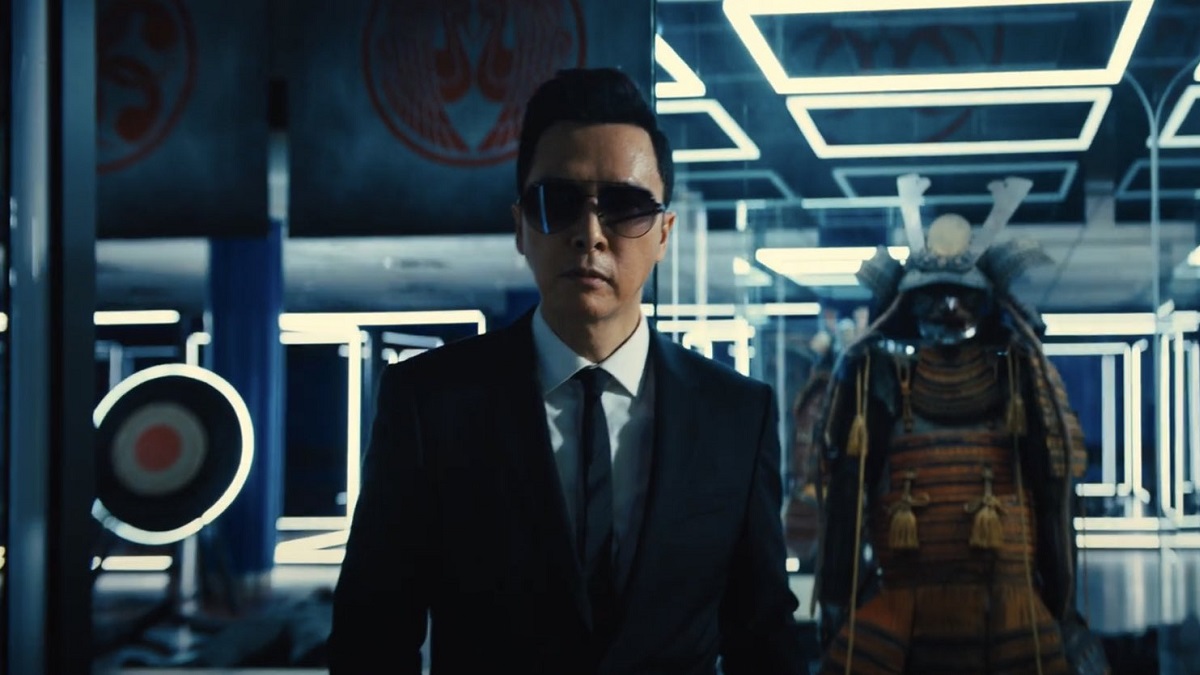
Are there occasions when the logistical side of things ends up impacting the creative aspect, and how do you deal with those sort of situations if and when they arise?
MS: Can you describe what you mean by logistical? Because then it’ll be easier to be more accurate.
If there’s ideas and sounds that you guys are working on, but you face obstacles in trying to make it make sense, in terms of the cut. If I’m explaining that in a way that makes sense?
MS: Yeah, all the time!
AK: Frequently! Frequently, it’s a battle between sound effects and music and planning. And a lot of times that’s dependent on filmmaker taste. I know some filmmakers want to hear music above all at all times. And others are.. Chad’s little more sound effects-centric, I believe, he wants that to be the featured player in a lot of these action scenes.
You know, depending on frequency content and music and effects, they will sometimes clash. So we have to try to work out with equalization or panning or balancing, how to make them both live at the same time. And that’s frequently a big challenge.
MS: In previous John Wick films, we have had a motorcycle and screaming distorted guitar at the same time, you can imagine they all sound the same.
Are there any audio Easter Eggs you managed to sneak into the movie, because you often hear of some memorable and even iconic sound effects being created in the most unlikely ways possible?
CG: Don’t get me started on the Wilhelm.
AK: Yeah, we have a Wilhem-like scream in there, but it’s not.
MS: Yeah, somebody imitated it well. I don’t know, Easter Eggs are more like homage is something else because there’s a lot of that in Chad’s filmmaking. So let me think of an example, you talk amongst yourselves! See if I can think of an example. I can think of something from John Wick 3, the obvious one.
AK: There’s some musically. There’s some elements of some cues, which are homages to Spaghetti Westerns and Kurosawa, those films. So musically, there’s a lot of homage going on towards films that Chad is a big fan of, and we all are. The old Spaghetti Westerns, Sergio Leone, and Kurosawa, and that ilk.
MS: Exactly. I mean, Chad is such a fan of all that, that he’s always looking for those moments, it’s not a sound thing. But the elder the beginning of the movie standing on the rock watching the horse race approach, that’s where Lawrence of Arabia has stood in Lawrence of Arabia, or Peter O’Toole stood in Lawrence of Arabia. So he sought that out and made that happen. So there’s that going on in the film, and specifically for sound, that was the perfect one.

Even though you’ve got hundreds of credits and between you, was there anything you were presented with or forced to contend with on John Wick Chapter 4 that you’d never had to deal with before?
MS: I’m gonna say no, right off the bat.
CG: No.
It sounds like a harmonious camp!
CG: It really was. I mean, it was a really fun process. I think that there was… there wasn’t much problematic, any, problematic moments really, at all. It all came together really nicely? And everybody was was really happy.
AK: I don’t remember any disagreements?
CG: Yeah. Not at all.
MS: It was really working on the same page. And that’s the magic of the genre, but it’s also the people, and people that Chad surrounds himself with, even if some are new to working on John Wick movie. That works really well that way. So yeah, you don’t have those disagreements, because everybody’s sort of marching towards the same goal, really.
It’s a cliche, but it sounds like working on John Wick really is like a family.
MS: It’s interesting, because also, I’ve been fortunate to go to a couple other premieres, and you get to the point where people that you never would cross paths with other than a premiere, because you’ll get introduced to them. Like cinematographers, production designers, writers, costumers. Definitely actors you might have never seen a looping stage, and producers, for sure. That just has a lot to do with that family spirit. I gotta say, it’s Chad really. So we’re really lucky to have that.
John Wick: Chapter 4 is now playing in theaters. You can check out our review of the movie here, as well as our exclusive interview with editor Nathan Orloff.

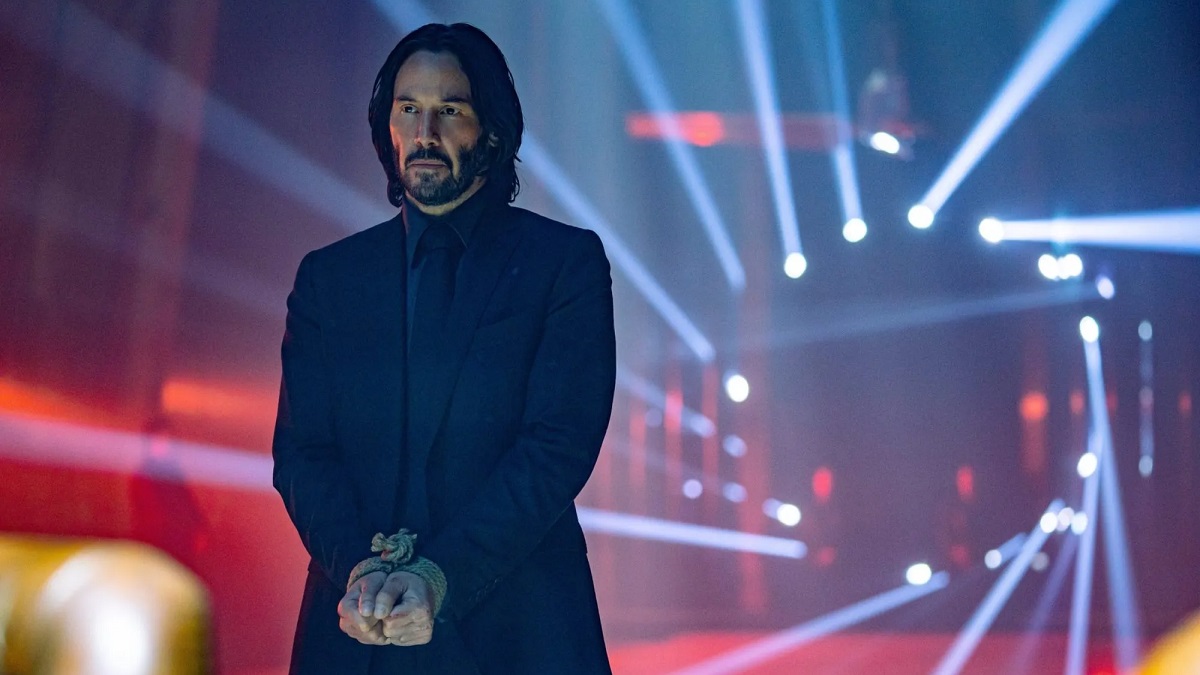









Published: Mar 24, 2023 02:24 pm